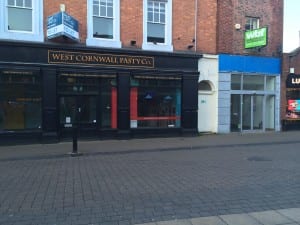The first week of site involved a lot of new information, from Ivring Goffman a sociologist who turns everyday events in to performance, to Christian Nold who maps the emotions and changes in the body as we navigate our way through a space. We discussed cartography in depth and the practitioners who deal with this sort of work. This led to watching a Youtube clip of Marcia Farquhar’s A Live Art Tour, something I found particularly interesting about this was the way she used chance operations in her performance. As she lead the public around the site, she had staged some of the events herself whilst others just happened to be there, this made it so you were unable to tell whether they were practised performance elements or not.
Towards the end of the session we walked the parameters of the city which we are able to perform in, we were told to walk around trying to notice places that could be interesting for a performance. I found myself struggling with this, as the City is something I see everyday, so it was difficult to then imagine it as a performance space. I found myself continuously asking would this idea be site specific, why is this site specific? At the end of the walk through the city, a skittle rolled down the hill and stopped in a hole in the concrete, as minute as it may seem, this was the moment I started to think as a site specific artist. Every small detail that happened in the City whether it be; falling leaves, people arguing, people sitting on a bench, I started to think what could I do with this. How could this be a performance?
During the Second week we continued to discuss and revise practitioners previously mentioned. We also discussed the idea of non places, this is ‘where we spend so much of our time: airports, railway stations, superstores, motorways and international hotel chains,’ (P.D Smith, 2009). However Marc Augé shows, ‘the anodyne and anonymous solitude of these non-places offers the transitory occupant the illusion of being part of some grand global scheme: a fugitive glimpse of a utopian city-world,’ (P.D Smith, 2009). This implies that these non-places, much of the time, of places we use to pass through to get to another destination, to get to where we want to be. Again this was another thing that I found myself interested in looking further into as a performance space. The fact that they are places for public to pass through means that will more than likely be busy places, therefore could create a good performance space as there would be more opportunities for audiences. Pearson states ‘If site-specific performance involves an activity, an audience and a place, then creative opportunities reside in the multiple creative articulations of us, them and there.’ (Pearson, 2010, 19) Therefore it is important to chose a place where you are likely to receive an audience especially if you are using audience participation.
The second time something sparked my imagination as a site-specific artist was after looking at Carl Lavery’s 25 instructions for performance in cities. These were a set of instructions devised to use as a stimulus for ways to think of the city as a performance space. My group devised our own instructions in an elevator, we spent about 25 minutes in the elevator, moving up and down between floors as different people stepped in and out of the elevator. This exercise left me intrigued with the way people interact with one an other in an elevator. Many people would step in the elevator and start a conversation with us from hearing what we were discussing, one woman shared that she had a Labrador. It was the conversations that took place that inspired me and began to give me initial performance ideas. I found myself interested in proximity, how close can you get to people before it becomes uncomfortable. Social, why is it that people start a conversation in a lift, but wouldn’t approach a 19 year old girl in a queue. Following this I began to think of words I was interested in too focus on as a performance, I came up with, darkness, silence, enclosed spaces, conversations, awkwardness, social, proximity, chance and coincidence. My task now is to begin to delve into practitioners that work with these themes for example, Robert Wilson and look for performances spaces that can enhance these ideas.
Works Cited
Lavery, C. (2005) Teaching Performance Studies: 25 instructions for performance in cities. Studies in Theatre and Performance. 25 (3) 229-238.
Pearson, M. (2010) Site Specific Performance. Basingstoke: Palgrave Macmillan.
Smith, PD. (2009) Non Places. The Guardian, 28 March.

